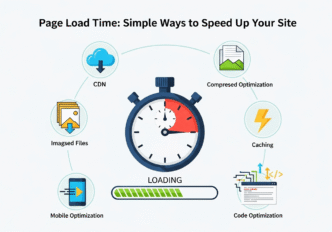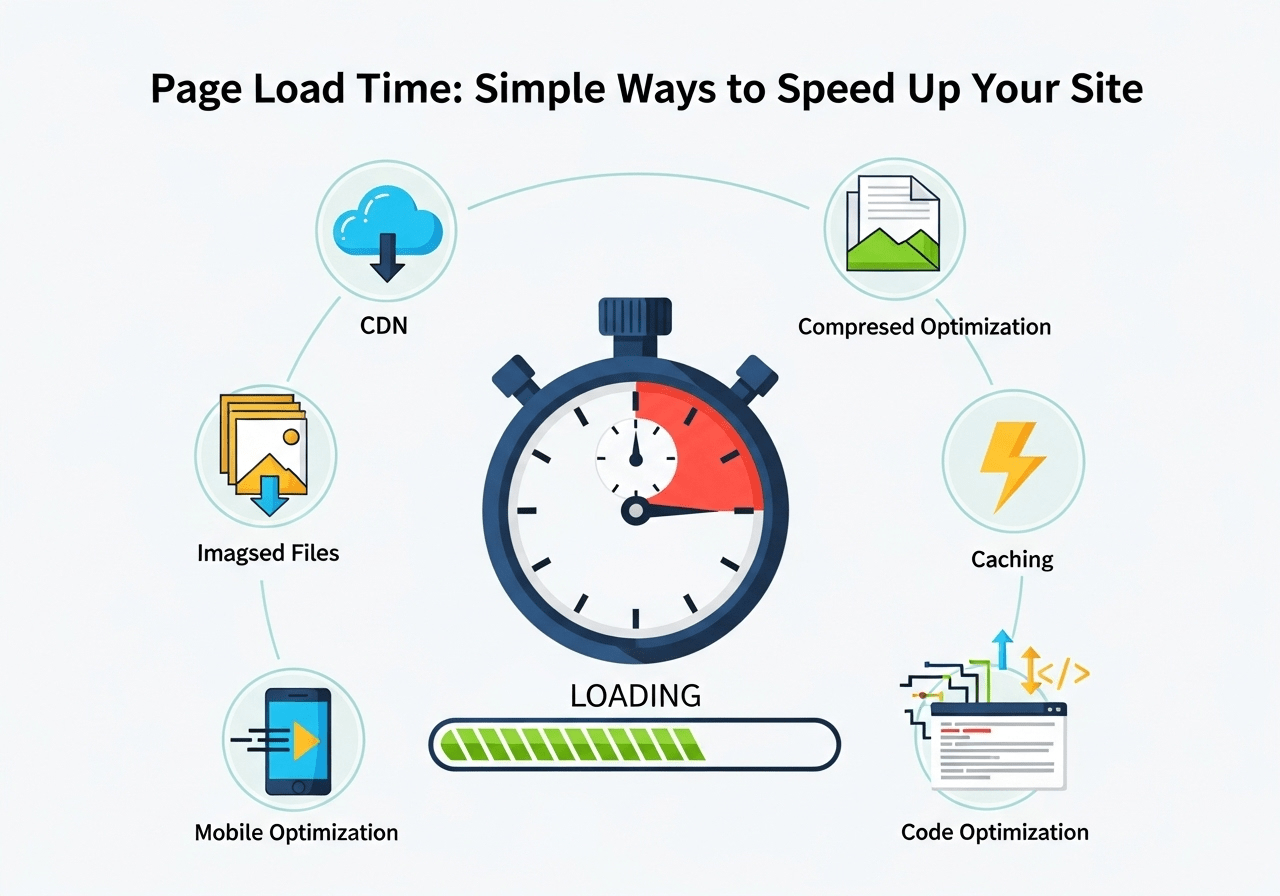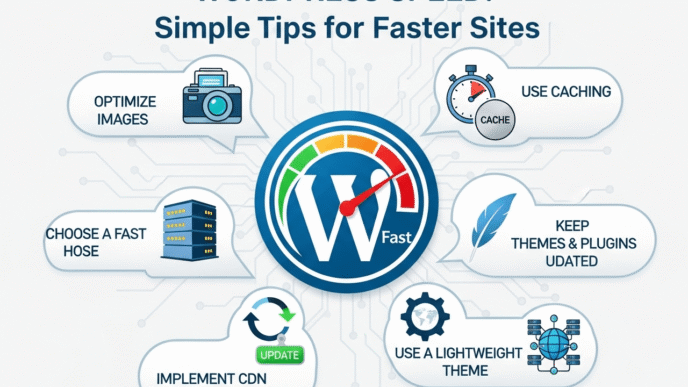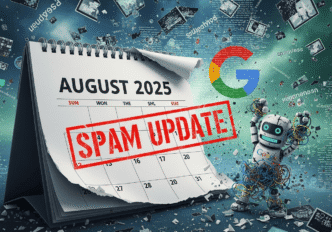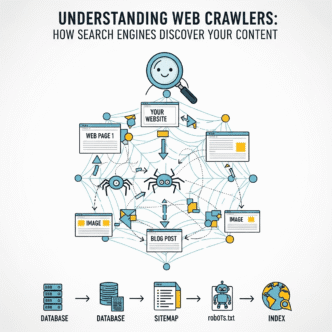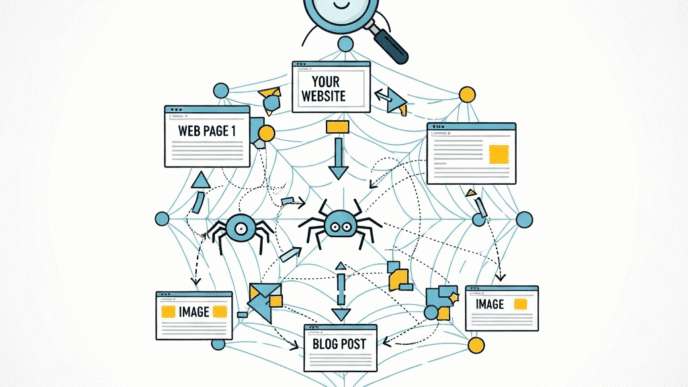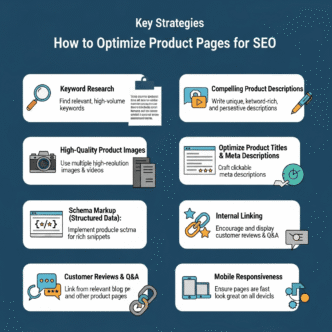You click on a website link, then wait… and wait… and wait some more. You start wondering if your internet died, check your WiFi connection, maybe even restart your browser. Sound familiar? That frustrating experience is exactly what your website visitors go through when your page load time is slower than a sleepy turtle crossing a busy highway.
Here’s the brutal truth: in today’s instant-gratification world, users expect websites to load faster than they can finish saying “loading.” If your pages take more than 3 seconds to load, you’re not just losing visitors – you’re practically handing them over to your competitors on a silver platter.
But don’t panic! Loading time optimization isn’t rocket science, and you don’t need a computer engineering degree to make dramatic improvements. Some of the most effective page loading speed fixes are surprisingly simple and can slash your load times in half with just a few tweaks. Ready to turn your sluggish site into a speed demon?
Table of Contents
Toggle
What Is Page Load Time and Why Does It Matter?
Page load time is exactly what it sounds like – the amount of time it takes for your web page to completely load and display all its content. Think of it like waiting for a pizza delivery: the timer starts when you place the order (click the link) and stops when the pizza arrives at your door (page fully loads).
But page load time isn’t just one simple measurement. It includes several stages:
- DNS lookup: Finding the server where your website lives
- Server response: How quickly your hosting responds
- Resource downloading: Loading images, CSS, JavaScript, and other files
- Rendering: Browser assembling and displaying the page
Why Page Load Time Is Critical:
- User patience threshold: 53% of mobile users abandon sites that take longer than 3 seconds
- SEO rankings: Google considers page speed a ranking factor
- Conversion rates: Every 1-second delay can reduce conversions by 7%
- Brand perception: Slow sites feel unprofessional and unreliable
The psychology behind this is simple: in our fast-paced digital world, waiting feels like punishment. Quick loading pages create positive first impressions, while slow pages trigger frustration and abandonment.
Pro Tip: Don’t just focus on your homepage load time. Test your most important pages – product pages, landing pages, and blog posts – because these often load slower than your optimized homepage.
How to Reduce Page Load Time: The Essential Strategies
How to reduce page load time comes down to understanding what slows pages down and systematically eliminating those bottlenecks. It’s like decluttering your home – remove what you don’t need, organize what you keep, and optimize the space for efficiency.
The Big Three Load Time Killers
Images: The #1 Speed Assassin Unoptimized images are responsible for most slow page loading speed issues. A single uncompressed photo can be larger than your entire website’s code.
Common Image Problems:
- Photos straight from cameras (5-10MB each)
- Using PNG format for photographs
- Serving desktop-sized images to mobile devices
- Missing compression and optimization
Heavy JavaScript and CSS Files Bloated code files slow down page performance by forcing browsers to download and process unnecessary data.
Code Bloat Issues:
- Multiple CSS frameworks loaded simultaneously
- JavaScript libraries you’re not actually using
- Inline styles scattered throughout HTML
- Unminified files with excessive whitespace
Poor Server Performance Even perfectly optimized content loads slowly on sluggish servers.
Server-Related Slowdowns:
- Shared hosting with limited resources
- Servers located far from your visitors
- Outdated server software and configurations
- Insufficient bandwidth during traffic spikes
Quick Wins for Immediate Improvement
5-Minute Fixes That Make a Big Difference:
- Compress your images using free tools like TinyPNG
- Enable browser caching through your hosting control panel
- Remove unused plugins and themes from your website
- Choose a faster hosting plan if you’re on basic shared hosting
- Optimize your largest images first for maximum impact
These simple changes can improve loading speed improvement by 30-50% without any technical expertise required.
Page Load Time Optimization Techniques: From Beginner to Advanced
Page load time optimization techniques range from simple tweaks anyone can implement to advanced strategies requiring technical knowledge. Let’s start with the easy wins and work our way up.
Beginner-Friendly Optimization Techniques
Image Optimization Made Simple: The easiest way to reduce load time is tackling your images:
Step-by-Step Image Optimization:
- Identify large images using browser developer tools
- Compress images using online tools like TinyPNG or JPEGmini
- Choose the right format: JPEG for photos, PNG for graphics with transparency
- Resize images to their actual display dimensions
- Implement lazy loading so images load only when needed
Caching: Set It and Forget It Browser caching tells visitors’ browsers to store copies of your files locally:
Caching Benefits:
- First-time visitors: Normal loading speed
- Return visitors: Lightning-fast loading from cached files
- Server load reduction: Fewer requests to your server
- Bandwidth savings: Less data transfer required
Intermediate Optimization Strategies
Content Delivery Network (CDN) Implementation: A CDN distributes your content across multiple servers worldwide for faster page loads.
CDN Advantages:
- Global speed improvement: Content served from nearby locations
- Reduced server load: Traffic distributed across multiple servers
- Improved reliability: Backup servers if primary goes down
- Easy setup: Most CDNs offer simple WordPress plugins
Database and Code Optimization: Clean up your website’s behind-the-scenes performance:
Database Cleanup Tasks:
- Remove spam comments and unnecessary revisions
- Optimize database tables for faster queries
- Delete unused media files taking up space
- Clear expired cache and temporary files
Code Minification and Compression: Remove unnecessary characters from your code files:
- Minify CSS: Remove whitespace, comments, and formatting
- Compress JavaScript: Eliminate unused code and optimize functions
- Combine files: Merge multiple CSS/JS files into fewer requests
- Enable GZIP compression: Reduce file transfer sizes by 70%+
Advanced Performance Optimization
Critical Path Optimization: Prioritize loading of essential content first:
Critical Resource Loading:
- Inline critical CSS for above-the-fold content
- Defer non-essential JavaScript until after page load
- Preload important assets like fonts and hero images
- Optimize font loading to prevent invisible text periods
Advanced Hosting Optimization:
- Server-side caching with Redis or Memcached
- HTTP/2 protocol for faster resource loading
- SSD storage for quicker file access
- Optimized server configurations for your platform
Pro Tip: Start with beginner techniques before moving to advanced optimization. A few simple image optimizations often provide bigger improvements than complex server configurations.
Improve Page Loading Speed Quickly: The 30-Minute Transformation
Improve page loading speed quickly with this systematic 30-minute optimization session. This focused approach delivers maximum impact in minimum time.
The 30-Minute Speed Boost Protocol
Minutes 1-10: Image Blitz
- Identify your largest images using PageSpeed Insights
- Compress the top 5 largest images using TinyPNG
- Replace them on your site with compressed versions
- Test loading speed to measure immediate improvement
Minutes 11-20: Plugin and Code Cleanup
- Deactivate unused plugins and delete them completely
- Remove unnecessary themes keeping only your active theme
- Clear any cache to ensure fresh testing
- Install a caching plugin if you don’t have one
Minutes 21-30: Quick Technical Fixes
- Enable GZIP compression through your hosting panel
- Set up browser caching with proper expiration headers
- Test your improvements using speed testing tools
- Document your results for future reference
Expected Results from 30-Minute Optimization
Typical Improvements:
- 40-60% reduction in total page size
- 2-4 second improvement in load times
- 15-25 point increase in PageSpeed Insights scores
- 20-30% reduction in bounce rates
Real-World 30-Minute Success Story: A local bakery followed this exact protocol and improved their homepage load time from 8.2 seconds to 3.1 seconds. The result? Their online order conversion rate increased by 89% within the first week.
Page Performance Optimization: Understanding the Technical Side
Page performance optimization involves understanding how browsers load and render web pages. This knowledge helps you make informed decisions about optimization priorities.
How Browsers Load Web Pages
The Page Loading Process:
- DNS Resolution: Browser finds your server’s IP address
- TCP Connection: Establishes connection to server
- HTTP Request: Browser requests the page
- Server Response: Server sends HTML content
- Resource Discovery: Browser identifies additional resources needed
- Resource Loading: Downloads CSS, JavaScript, images, fonts
- Page Rendering: Browser assembles and displays the page
Understanding Load Time Components:
| Component | Typical Time | Optimization Impact | Difficulty |
|---|---|---|---|
| DNS Lookup | 20-120ms | Low | Hard |
| Server Response | 100-800ms | High | Medium |
| Resource Download | 1-5 seconds | Very High | Easy |
| Page Rendering | 200-1000ms | Medium | Medium |
Critical Performance Metrics
Key Load Time Measurements:
Time to First Byte (TTFB):
- What it measures: Server response speed
- Good target: Under 200ms
- Optimization focus: Better hosting, server optimization
First Contentful Paint (FCP):
- What it measures: When first content appears
- Good target: Under 1.8 seconds
- Optimization focus: Critical resource optimization
Largest Contentful Paint (LCP):
- What it measures: When main content finishes loading
- Good target: Under 2.5 seconds
- Optimization focus: Image and content optimization
Time to Interactive (TTI):
- What it measures: When page becomes fully usable
- Good target: Under 5 seconds
- Optimization focus: JavaScript optimization
Pro Tip: Focus on Largest Contentful Paint (LCP) as your primary metric. It correlates most strongly with user perception of page speed and is a Google ranking factor.
Reduce Website Loading Time: Platform-Specific Strategies
Reduce website loading time strategies vary depending on your website platform. Different platforms have unique optimization opportunities and limitations.
WordPress Speed Optimization
WordPress-Specific Load Time Issues:
- Plugin bloat: Too many active plugins slowing performance
- Theme overhead: Heavy themes with unnecessary features
- Database inefficiency: Accumulated data from plugins and revisions
- Poor hosting: Shared hosting insufficient for WordPress requirements
WordPress Optimization Checklist:
- Choose lightweight themes optimized for speed
- Limit plugins to essential functionality only
- Use WordPress caching plugins like W3 Total Cache or WP Rocket
- Optimize WordPress database with plugins like WP-Optimize
- Choose WordPress-optimized hosting with SSD storage
E-commerce Platform Optimization
Shopify Speed Optimization:
- Minimize app usage – each app adds loading overhead
- Optimize product images – compress without losing quality
- Choose fast themes – test before committing to heavy themes
- Use Shopify’s CDN – leverage built-in content delivery
WooCommerce Speed Tips:
- Optimize product galleries – compress and resize images
- Limit related products – reduce database queries per page
- Use object caching – store frequently accessed data
- Optimize checkout process – remove unnecessary fields and steps
Static Site Optimization
HTML/CSS Website Optimization:
- Minimize HTTP requests – combine CSS and JavaScript files
- Optimize images – use modern formats like WebP
- Implement compression – enable GZIP on your server
- Use efficient hosting – choose fast, reliable hosting providers
Real-World Page Load Time Success Stories
Let me share detailed examples of loading speed improvement that demonstrate the impact of systematic optimization.
Case Study 1: Photography Portfolio Website
The Challenge: A professional photographer’s portfolio was losing potential clients due to extremely slow loading times for high-resolution images.
Initial Performance Issues:
- Homepage load time: 12.3 seconds
- Individual portfolio pages: 15-20 seconds
- Mobile performance: Nearly unusable
- Bounce rate: 78% (industry average: 45%)
Optimization Strategy Implemented:
Week 1: Image Revolution
- Converted RAW files: Processed all images through Lightroom with web optimization
- Implemented WebP format: 85% file size reduction while maintaining quality
- Added lazy loading: Images load only when visitors scroll to them
- Created responsive images: Different sizes for mobile, tablet, and desktop
Week 2: Technical Infrastructure
- Upgraded hosting: Moved from shared hosting to photography-optimized VPS
- Implemented CDN: Used Cloudflare for global image delivery
- Set up caching: Browser and server-side caching for return visitors
- Optimized code: Minified CSS and JavaScript files
Results After Optimization:
- Homepage load time: 2.1 seconds (83% improvement)
- Portfolio pages: 3.2 seconds (84% improvement)
- Mobile performance: 2.8 seconds (85% improvement)
- Bounce rate: 31% (60% improvement)
Business Impact:
- Client inquiries: +156% increase through website contact form
- Portfolio engagement: +234% increase in time spent viewing galleries
- Social sharing: +89% increase in image shares from website
- SEO rankings: +23 average position improvement for target keywords
Case Study 2: Small Business Service Website
The Challenge: A local HVAC company’s website was losing leads to faster competitors, especially on mobile devices.
Initial Technical Issues:
- Multiple speed problems: Large background videos, unoptimized images, slow server
- Mobile performance: 9.2-second average load time
- High bounce rate: 71% of mobile visitors leaving immediately
- Poor conversion: 0.8% form completion rate
Systematic Optimization Approach:
Phase 1: Emergency Fixes (Week 1)
- Replaced background video: Used optimized static image with subtle CSS animation
- Compressed service images: Reduced file sizes by 82% on average
- Removed unnecessary plugins: Deactivated 8 plugins they weren’t using
- Basic caching setup: Installed W3 Total Cache with default settings
Phase 2: Mobile-First Optimization (Week 2)
- Mobile image optimization: Created mobile-specific image sizes
- Touch optimization: Improved button sizes and spacing for mobile
- Form simplification: Reduced contact form from 12 fields to 4 essential fields
- Mobile-specific CSS: Streamlined styles for faster mobile rendering
Phase 3: Advanced Performance (Week 3)
- Server optimization: Upgraded to SSD hosting with local data center
- Advanced caching: Implemented database caching and object caching
- Code cleanup: Removed unused CSS and JavaScript
- Font optimization: Used system fonts to eliminate web font loading delays
Final Results:
- Mobile load time: 2.4 seconds (74% improvement)
- Desktop load time: 1.8 seconds (69% improvement)
- Mobile bounce rate: 34% (52% improvement)
- Form conversion rate: 3.2% (300% improvement)
Business Results:
- Monthly leads: Increased from 23 to 71 (+209%)
- Phone calls: +89% increase in calls from mobile users
- Service bookings: +167% increase in online appointment scheduling
- Revenue attribution: $47,000 additional monthly revenue traced to website improvements
Pro Tip: This case study demonstrates that mobile optimization often provides the biggest business impact. Most service businesses get more mobile traffic than desktop, so prioritizing mobile load times delivers maximum ROI.
Page Load Time Best Practices: Long-Term Maintenance
Page load time best practices extend beyond one-time optimization to ongoing maintenance and monitoring. Quick loading pages require consistent attention to prevent performance regression.
Ongoing Performance Maintenance
Monthly Speed Maintenance Tasks:
- Test key pages using PageSpeed Insights or GTmetrix
- Review analytics for unusual bounce rate spikes
- Check for plugin updates that might affect performance
- Monitor hosting performance and server response times
- Clean up media library by removing unused images
Quarterly Deep Optimization:
- Comprehensive speed audit of all important pages
- Database optimization and cleanup
- Review and update optimization techniques
- Competitor speed analysis to maintain competitive advantage
- Performance budget review and adjustment
Setting Performance Standards
Establishing Load Time Targets:
| Page Type | Load Time Target | Priority Level | Optimization Focus |
|---|---|---|---|
| Homepage | Under 2 seconds | Critical | First impression optimization |
| Product/Service Pages | Under 2.5 seconds | Critical | Conversion optimization |
| Blog Posts | Under 3 seconds | High | Content delivery optimization |
| Contact/About Pages | Under 3 seconds | Medium | Basic optimization |
Performance Budget Implementation:
- Set maximum file sizes for different resource types
- Establish load time thresholds for different page types
- Create alerts for performance regression
- Document optimization standards for team members
Future-Proofing Your Site Speed
Staying Ahead of Performance Trends:
- Monitor Core Web Vitals as Google’s ranking factors evolve
- Test on real devices with varying connection speeds
- Keep up with optimization techniques and new technologies
- Plan for traffic growth by monitoring performance under load
Technology Adoption Strategy:
- Evaluate new image formats like AVIF for better compression
- Consider modern hosting solutions like edge computing
- Implement progressive enhancement for faster initial loads
- Stay informed about browser performance improvements
For comprehensive strategies on how page load time optimization fits into your overall website performance strategy, explore our detailed guide: Website Speed: Why Every Second Counts for Rankings. This resource provides advanced techniques for turning load time improvements into better search rankings and business results.
Common Page Load Time Mistakes to Avoid
Learning page speed enhancement includes understanding what NOT to do. These common mistakes can actually slow down your site or create new problems.
Over-Optimization Pitfalls
Mistake 1: Compressing Images Too Aggressively While image optimization is crucial, over-compression can hurt your brand image.
The Problem: Pixelated, low-quality images that look unprofessional The Solution: Find the balance between file size and visual quality (usually 70-80% compression)
Mistake 2: Installing Too Many Optimization Plugins Multiple speed plugins can conflict with each other and actually slow down your site.
The Problem: Plugin conflicts, duplicate optimization, and increased overhead The Solution: Choose one comprehensive solution rather than multiple specialized plugins
Mistake 3: Focusing Only on Test Scores Obsessing over perfect PageSpeed scores while ignoring real user experience.
The Problem: Optimizing for tools instead of users The Solution: Balance test scores with actual user behavior and business metrics
Technical Implementation Errors
Caching Configuration Problems:
- Over-caching dynamic content: Breaking functionality for logged-in users
- Under-caching static content: Missing performance opportunities
- Cache conflicts: Multiple caching systems interfering with each other
CDN Misconfigurations:
- Improper geographic setup: Serving content from distant locations
- Incorrect cache settings: Dynamic content cached inappropriately
- SSL certificate issues: Breaking secure connections
Pro Tip: Always test your optimizations on a staging site first. The goal is to improve user experience, not break website functionality. Keep backups before making major changes.
Your Page Load Time Optimization Action Plan
Ready to transform your page loading speed? Here’s your systematic approach to faster loading times:
Week 1: Quick Impact Assessment
- Test current performance using Google PageSpeed Insights
- Identify largest files and biggest opportunities
- Compress top 10 largest images using online tools
- Remove unused plugins and themes
- Measure improvements and document results
Week 2: Technical Foundation
- Set up caching plugin or service
- Enable compression (GZIP) on your server
- Optimize database by removing unnecessary data
- Configure CDN if your audience is global
- Test mobile performance specifically
Week 3: Advanced Optimization
- Implement lazy loading for images and videos
- Minify CSS and JavaScript files
- Optimize font loading and reduce font varieties
- Set up performance monitoring for ongoing tracking
- Create optimization maintenance schedule
Week 4: Refinement and Monitoring
- Fine-tune optimizations based on real user data
- Set performance budgets for future content
- Train team members on speed-conscious practices
- Plan ongoing optimization priorities
- Correlate speed improvements with business metrics
Frequently Asked Questions About Page Load Time
What is considered a good page load time?
Answer: Aim for under 3 seconds for good user experience, with under 2 seconds being excellent. For mobile devices, target under 2.5 seconds due to Google’s mobile-first indexing and mobile user expectations.
How do I test my page load time accurately?
Answer: Use multiple testing tools like Google PageSpeed Insights, GTmetrix, and Pingdom for comprehensive analysis. Test from different locations and devices, and run multiple tests to account for variations in server performance.
Should I focus on desktop or mobile page load time?
Answer: Prioritize mobile load time since Google uses mobile-first indexing and most web traffic is mobile. However, don’t ignore desktop performance entirely – optimize mobile first, then ensure desktop remains competitive.
Can page load time improvements really increase conversions?
Answer: Absolutely. Studies show every 1-second improvement can increase conversions by 2-7%. Amazon found that every 100ms improvement increased revenue by 1%. Fast loading directly correlates with better user experience and business results.
How often should I optimize my page load time?
Answer: Monitor monthly, optimize quarterly, and test after any major changes. Set up automated monitoring to catch performance regressions quickly. Regular maintenance prevents speed degradation over time.
Page load time optimization is one of the most impactful improvements you can make to your website. It affects user experience, search rankings, and business results simultaneously. Start with the simple techniques, measure your progress, and gradually implement more advanced strategies.
Remember, the goal isn’t perfect test scores – it’s creating genuinely better experiences for your users. Every second you shave off loading time is an investment in user satisfaction, better search rankings, and improved business performance.
Your competitors are already optimizing their load times. The question isn’t whether you should improve your page speed, but how quickly you can implement these improvements to gain competitive advantage.
For more advanced strategies on optimizing overall website performance beyond just page load time, check out our comprehensive guide: Website Speed: Why Every Second Counts for Rankings. The techniques in that resource will help you create a complete performance optimization strategy that drives measurable business results.
What’s been your biggest challenge with page load time optimization? Share your experience and any surprising improvements you’ve discovered in the comments below!
